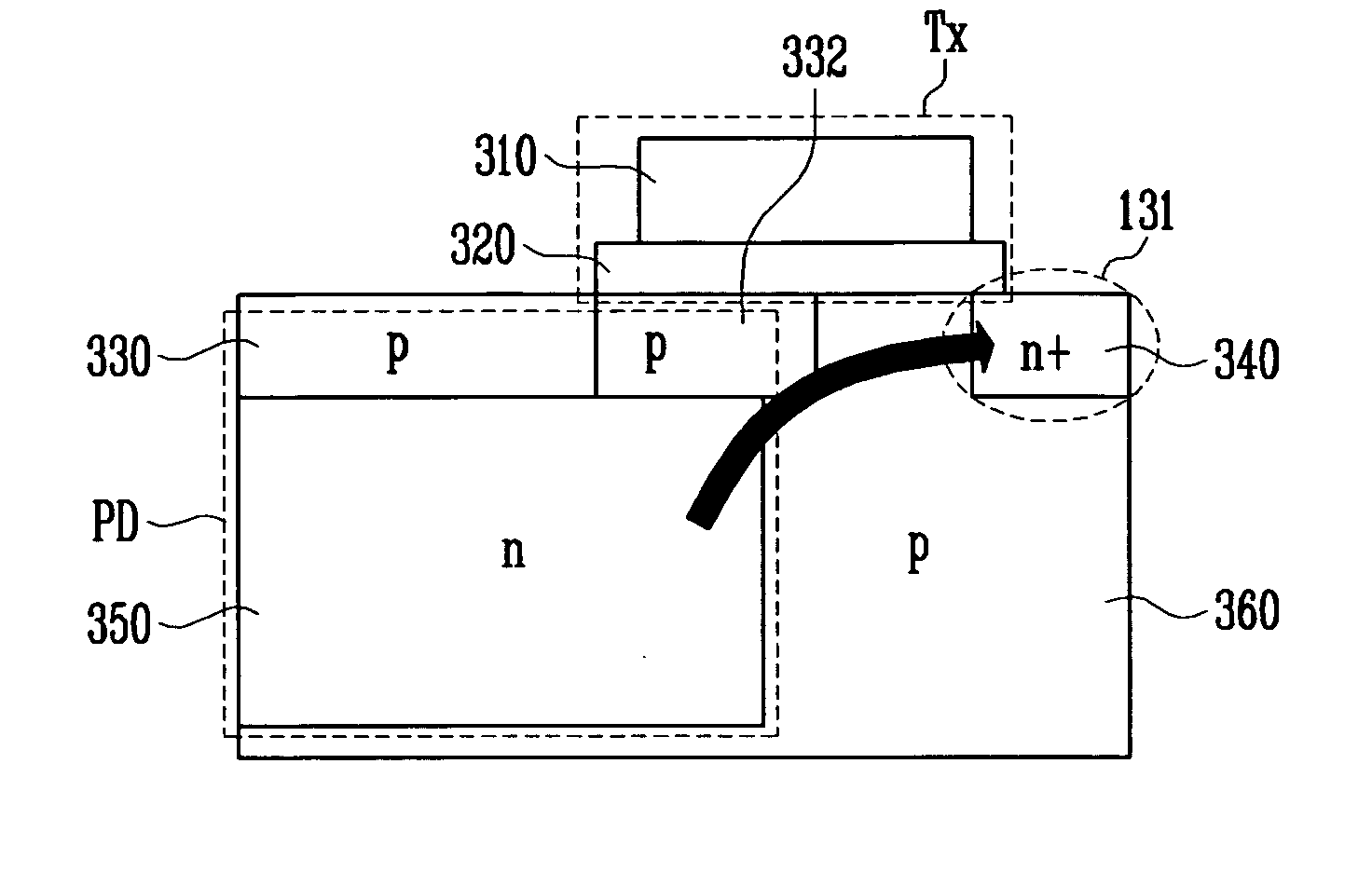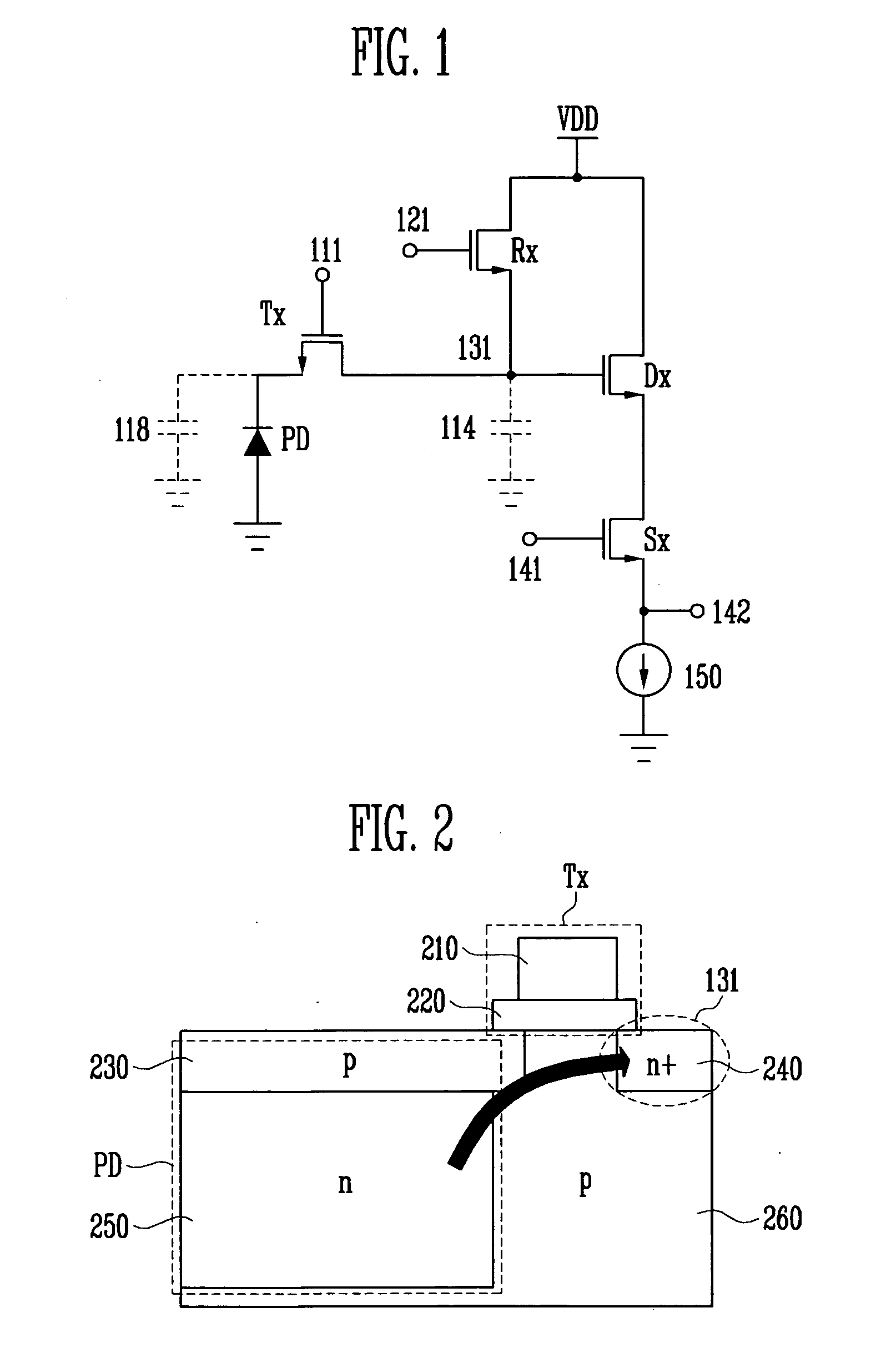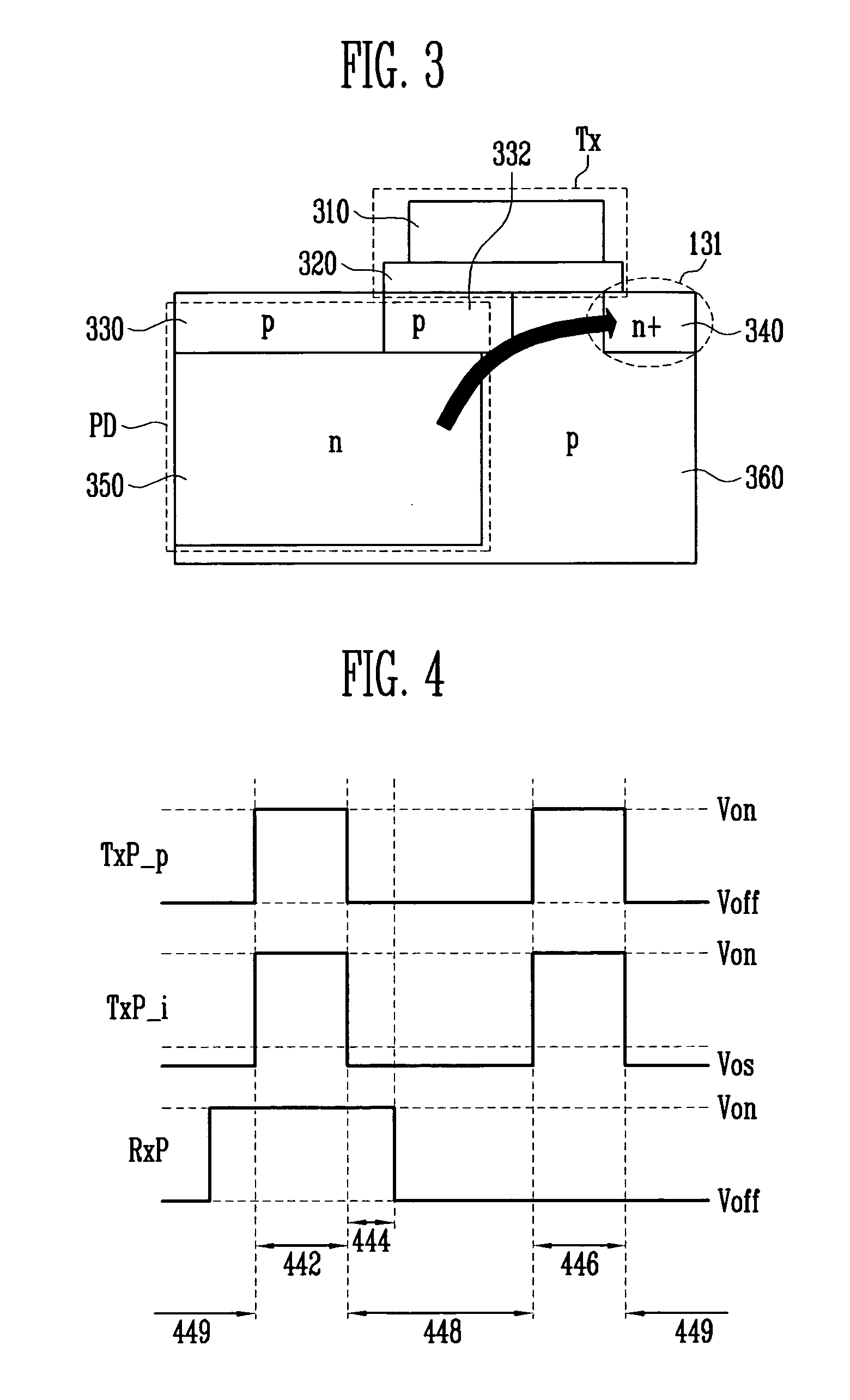Low-noise image sensor and transistor for image sensor
a low-noise, image sensor technology, applied in the direction of electrical equipment, semiconductor devices, radio frequency control devices, etc., can solve the problems of image lag, incomplete charge transfer, image lag, etc., to improve the well capacity, enhance the performance of the image sensor, and raise the barrier
- Summary
- Abstract
- Description
- Claims
- Application Information
AI Technical Summary
Benefits of technology
Problems solved by technology
Method used
Image
Examples
exemplary embodiment 1
[0044]FIG. 3 is a cross-sectional view of a 4-transistor pixel structure according to an exemplary embodiment of the present invention. Though the exemplary embodiment specifically describes the aspect of the present invention is applied to a transfer transistor, this is only an example for convenience of descriptions because a transfer transistor has the highest efficiency. Thus, it is apparent that the aspect of the invention may also be applied to other transistor devices in an image sensor (particularly, a reset transistor with a function of transferring charges), which is also in the scope of the present invention.
[0045]FIG. 3 only illustrates a photodiode PD, a transfer transistor Tx and a floating diffusion region 131 in the 4-transistor pixel structure. The transfer transistor Tx comprises a gate 310, a gate oxide layer 320 and a p-type substrate 360, the photodiode PD region comprises a photodiode (n-type) doped region 350 and a surface p-doped region 330, and the diffusio...
exemplary embodiment 2
[0056] The exemplary embodiment relates to a transfer transistor having an optimized stack structure for the control method for the transfer transistor illustrated in FIG. 4. Though the exemplary embodiment specifically describes the aspect of the present invention is applied to a transfer transistor, this is only an example for convenience of descriptions because a transfer transistor has the highest efficiency. Thus, it is apparent that the aspect of the invention may also be applied to other transistor devices in an image sensor (particularly, a reset transistor with a function of charge transfer), which is also in the scope of the present invention.
[0057] A transfer transistor illustrated in FIG. 5 includes a main gate oxide 520 disposed on a charge transfer channel from a photodiode to a diffusion node; a main gate electrode 510 disposed on the main gate oxide 520; a sub gate oxide 522 extending from the main gate oxide 520 and overlapping a part of the photodiode; and a sub g...
exemplary embodiment 3
[0062] The present exemplary embodiment relates to an image sensor having an optimal structure for suppressing dark current according to a third aspect of the present invention. Here, the image sensor may be modified entirely or partially.
[0063] The image sensor illustrated in FIG. 6 includes: a diffusion node region 620; a photodiode region 610; a transfer transistor for forming a charge transfer channel between the diffusion node and the photodiode; and a dark current removal electrode 640 electrically connected with a gate electrode 630 of the transfer transistor, and insulated from a part of the photodiode region in which dark current is generated and overlapping the part.
[0064] The dark current removal electrode 640 may be a transparent electrode, for example, formed of ITO, to increase photon absorbing efficiency in the photodiode region 610 under the dark current removal electrode 640, and form an oxide layer under the photodiode region 610 to ensure an electrically insulat...
PUM
 Login to View More
Login to View More Abstract
Description
Claims
Application Information
 Login to View More
Login to View More - R&D
- Intellectual Property
- Life Sciences
- Materials
- Tech Scout
- Unparalleled Data Quality
- Higher Quality Content
- 60% Fewer Hallucinations
Browse by: Latest US Patents, China's latest patents, Technical Efficacy Thesaurus, Application Domain, Technology Topic, Popular Technical Reports.
© 2025 PatSnap. All rights reserved.Legal|Privacy policy|Modern Slavery Act Transparency Statement|Sitemap|About US| Contact US: help@patsnap.com



